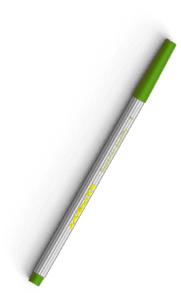Ohio State University Association Between Internet Addiction and Social Anxiety Ques
Question Description
https://www.researchgate.net/publication/269753493…
Ive included some definitions of clinical terms used in the papers introduction. This might help as you read the article:
- Social anxiety is much more common than many people realize. It includes a desire to be with people in social situations, but feeling uncomfortable due to social awkwardness. It can include not knowing what to say to people in social situations, feeling embarrassed, having symptoms of anxiety, such as heart pounding, sweating, etc., and a concern that others wont like you or will evaluate you in negative ways. In more severe forms it can cause people to avoid most social situations, even though they want to be with people. In more severe forms, it also is called social anxiety disorder or social phobia.
- Comorbidity means that two problems occur together, e.g., that internet addiction and depression often occur in the same person.
- Affective disorders refer to a range of problems, including more mild depression to more severe depression and bipolar illness (sometimes called manic depression).
- Somatic means experiences of physical discomfort, such as headaches, stomach upset, muscle aches, feeling physically sick, etc. in response to stress.
Questions to answer: Note: This paper reports out on two studies which are basically the same with different samples. Use Study 1 to answer the questions about the Methods and Results.
Use the Methods section for Study 1 to answer Qs 3 – 5.
3. What are the two main conceptual variables in this study. (2 points)
4. How do the researchers operationalize their two main conceptual variables? Note that the authors also use a demographic questionnaire to ask about characteristics of the study participants. I am not asking you about this measure in this question. (2 points)
5. What information do the authors report to tell us about the construct validity of their two main measures. Be specific. (2 points)
Use the Results of Study 1 to answer Qs 6 – 10. Do not worry about the last paragraph in the this Results section that talks about ANOVA.
(3 points)
- 6. A. What statistic do the authors use to test the relationship between the two variables in Hypothesis 1?
B. What is the value of the statistic and how large is this effect size?
C. Is the finding significant and how do you know? - 7. Do the authors data analyses support their second hypothesis? You can just answer yes or no. (1 point)
- 8. What about the third hypothesis? (1 point)
9. Aside from the Results section, what are two other places you would look in this article (or empirical research articles in general) to find out if the hypotheses were supported? (2 points)
10.Look at Figure 1. (3 points)
A. What do the separate bars represent?
B. What does the height of the bars represent?
C. When comparing the two bars, what are they telling us? Use the Methods section for Study 1 to answer Qs 3 – 5.
Have a similar assignment? "Place an order for your assignment and have exceptional work written by our team of experts, guaranteeing you A results."








